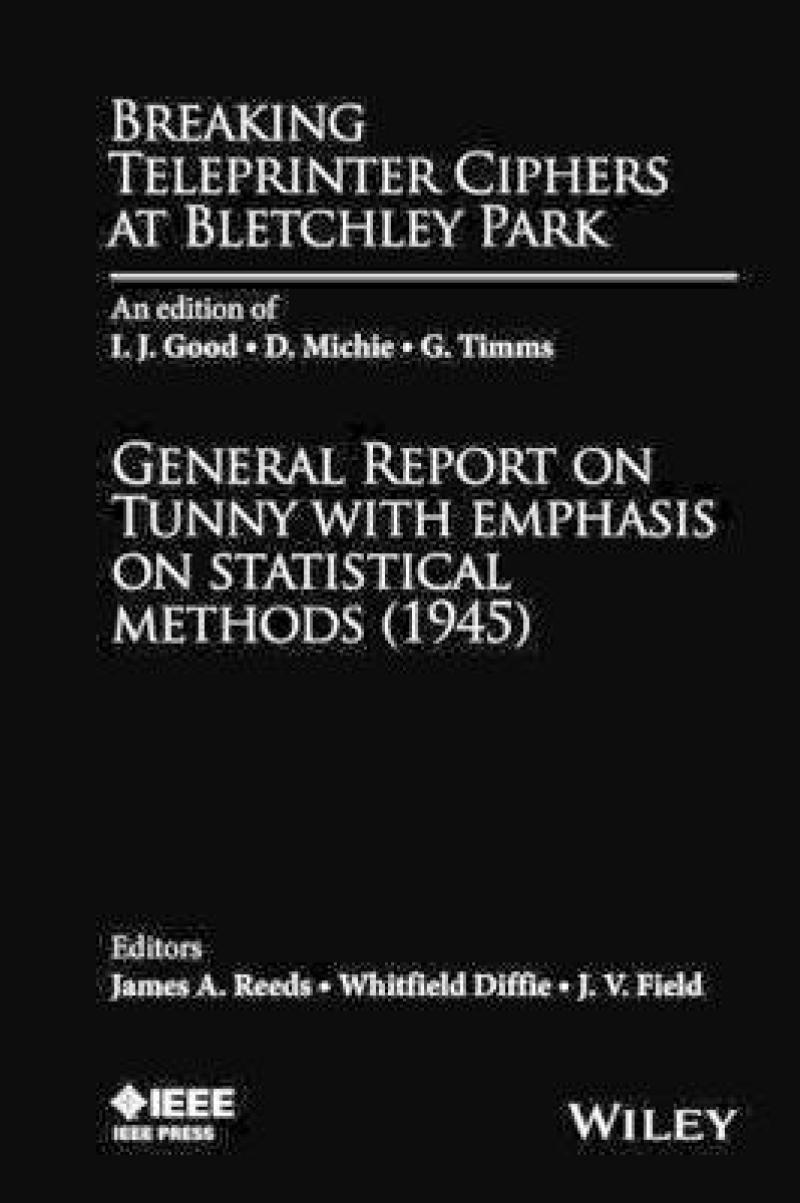- Explores the likely roots of the ideas entering into the Tunny cryptanalysis
- Includes examples of original worksheets, and printouts of the Tunny-breaking process in action
- Presents additional commentary, biographies, glossaries, essays, and bibliographies
Preface xiii
Editorial Notes xiv
Notes on Vocabulary xiv
List of Abbreviations xv
Cryptanalytic Significance of the Analysis of Tunny, by Whitfield Diffie xvii
Editors’ Introduction, by Whitfield Diffie and J. V. Field xxv
Statistics at Bletchley Park, by S. L. Zabell lxxv
Biographies of Authors ciii
Notes on the Editors of the Present Volume cvii
List of Figures cix
General Report on Tunny, with emphasis on statistical methods 1
Part 0: Preface
Chapter 01: Preface 3
Part 1: Introduction
Chapter 11: German Tunny 6
Chapter 12: Cryptographic Aspects 22
Chapter 13: Machines 32
Chapter 14: Organisation 35
Chapter 15: Some Historical Notes 39
Part 2: Methods of Solution
Chapter 21: Some Probability Techniques 43
Chapter 22: Statistical Foundations 50
Chapter 23: Machine Setting 80
Chapter 24: Rectangling 110
Chapter 25: Chi-Breaking from Cipher 139
Chapter 26: Wheel-Breaking from Key 185
Chapter 27: Cribs 219
Chapter 28: Language Methods 237
Part 3: Organisation
Chapter 31: Mr Newman’s Section 262
Chapter 32: Organisation of the Testery 267
Chapter 33: Knockholt 268
Chapter 34: Registration and Circulation 269
Chapter 35: Tapemaking and Checking 271
Chapter 36: Chi-Breaking from Cipher 275
Chapter 37: Machine Setting Organisation 277
Chapter 38: Wheel-Breaking from Key, Organisation 280
Chapter 39: Language Methods 282
Part 4: Early Methods and History
Chapter 41: The First Break 284
Chapter 42: Early Hand Methods 290
Chapter 43: Testery Methods 1942–44 298
Chapter 44: Hand Statistical Methods 305
Part 5: Machines
Chapter 51: Introductory 309
Chapter 52: Development of Robinson and Colossus 312
Chapter 53: Colossus 316
Chapter 54: Robinson 336
Chapter 55: Specialized Counting Machines 346
Chapter 56: Copying Machines 350
Chapter 57: Simple machines 361
Chapter 58: Photographs 362
Part 6: Raw Materials
Chapter 61: Raw Materials — Production, with Plans of Tunny Links 381
Part 7: References
Chapter 71: Glossary and Index 387
Chapter 72: Notation 435
Chapter 73: Bibliography 441
Chapter 74: Chronology 444
Part 8: Conclusions
Chapter 81: Conclusions 452
Part 9: Appendices
Chapter 91: The 5202 Machine 456
Chapter 92: Recovery of Motor Patterns from De-chi 471
Chapter 93: Thrasher 482
Chapter 94: Research into the QEP System 484
Chapter 95: Mechanical Flags 488
Appendix A: Transmission of Teleprinter Signals, by J. A. Reeds 495
Appendix B: Activities at Knockholt, by J. A. Reeds 503
Appendix C: The 5202 Machine, by J. A. Reeds 530
Appendix D: Initial Conception of Colossus, by J. A. Reeds 535
Appendix E: List of Scanned Exhibits 540
Supplementary Glossary 542
Biographical Notes 547
Notes 561
Bibliography 624
Index 645
This detailed technical account of breaking Tunny is an edition of a report written in 1945, with extensive modern commentary
Breaking Teleprinter Ciphers at Bletchley Park gives the full text of the General Report on Tunny (GRT) of 1945, making clear how the ideas, notation and the specially designed machines that were used differ from what was generally accepted in 1945, and, where a modern reader might be misled, from what is understood now. The editors of this book clarify the sometimes slightly strange language of the GRT and explain the text within a variety of contexts in several separate historical story lines, some only implicit in the GRT itself.
The first story, told by the authors of the GRT, describes how, using specially designed machines, including from 1944 the "Colossus", the British broke the enciphered teleprinter messages sent by the highest command levels of the Germany Army. The cipher machines the Germans used were the Lorenz SZ 40 series, called "Tunny" by the British. The second story shows how the use of then-unfashionable Bayesian methods in statistics proved to be essential to the British success. The third story describes a significant stage in the invention of the modern digital computer. This story is connected with Alan Turing's 1936 paper on the theory of computability, which is nowadays seen as a starting point for the development of the modern digital computer.
This book includes:
- Over 200 pages of commentary, biographies, glossaries, and essays related to the text of the General Report on Tunny
- The complete text of the original GRT, covering the general theory of Tunny breaking and of numerous refinements appropriate to special-case situations
- All the examples of original worksheets and printouts, showing the Tunny-breaking process in action, that appear in the GRT
The main purpose of this book is to present the actual words of the GRT for use by readers with a serious interest in the history of cryptography, computing, or mathematics.
Produktdetaljer
Biografisk notat
James A. Reeds is an applied mathematician and is currently on the research staff at the Center for Communications Research, Princeton, NJ.
Whitfield Diffie is best known for his 1975 discovery of the concept of public key cryptography. Since 1993, he has worked largely on public policy aspects of cryptography. His position in opposition to limitations on the business and personal use of cryptography has been the subject of articles in the New York Times and programs on networks such as CNN.
J.V. Field, an Honorary Visiting Research Fellow in the Department of History of Art at Birkbeck, University of London, is now a historian of science but in the 1960s worked as a computer programmer.
